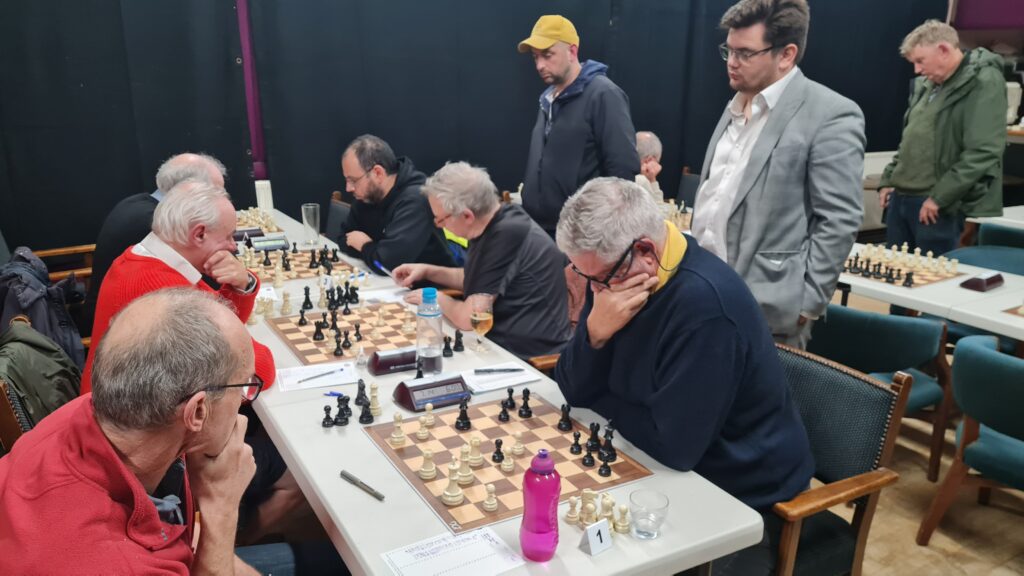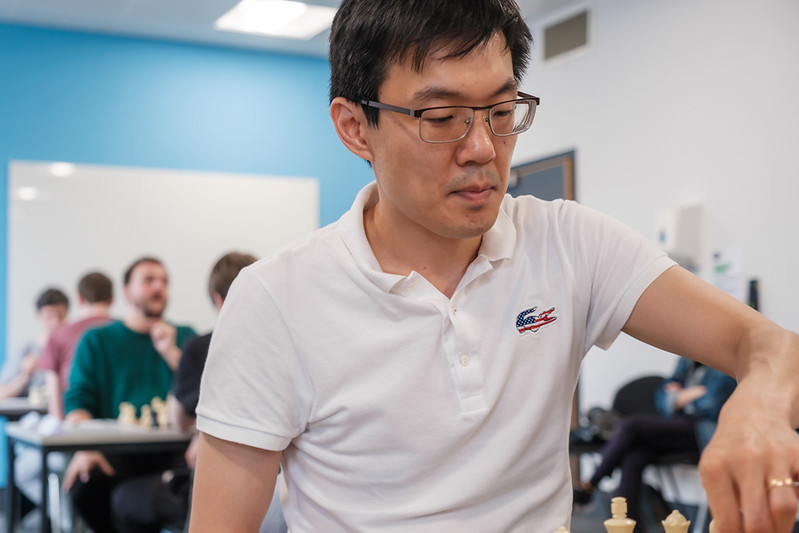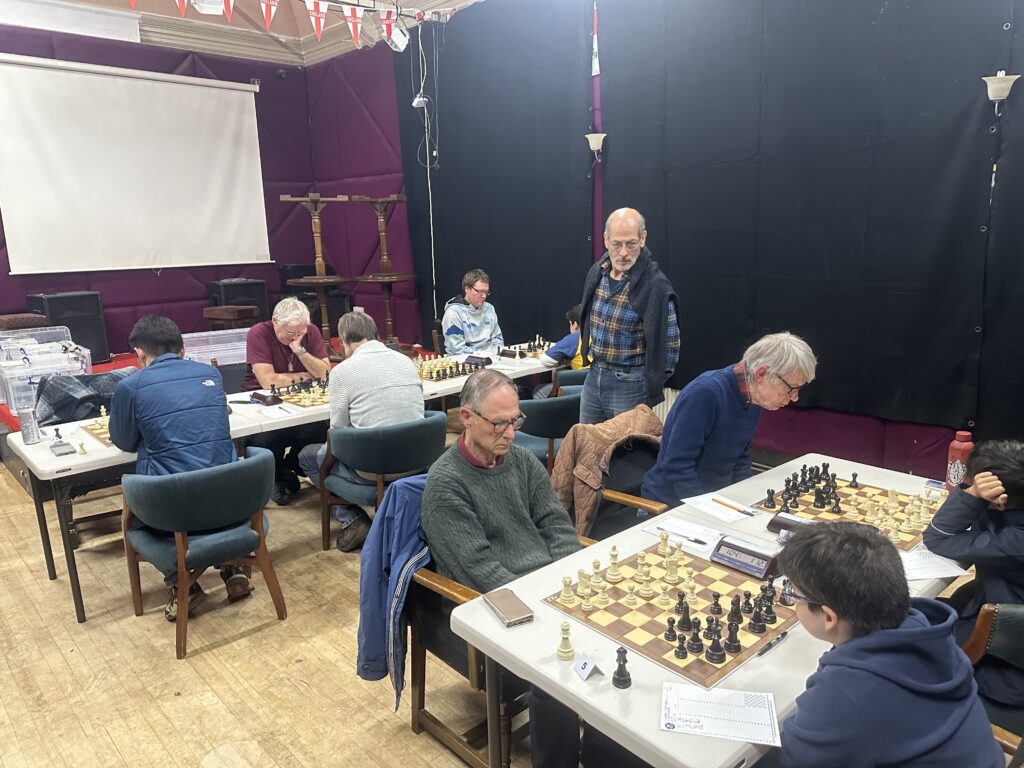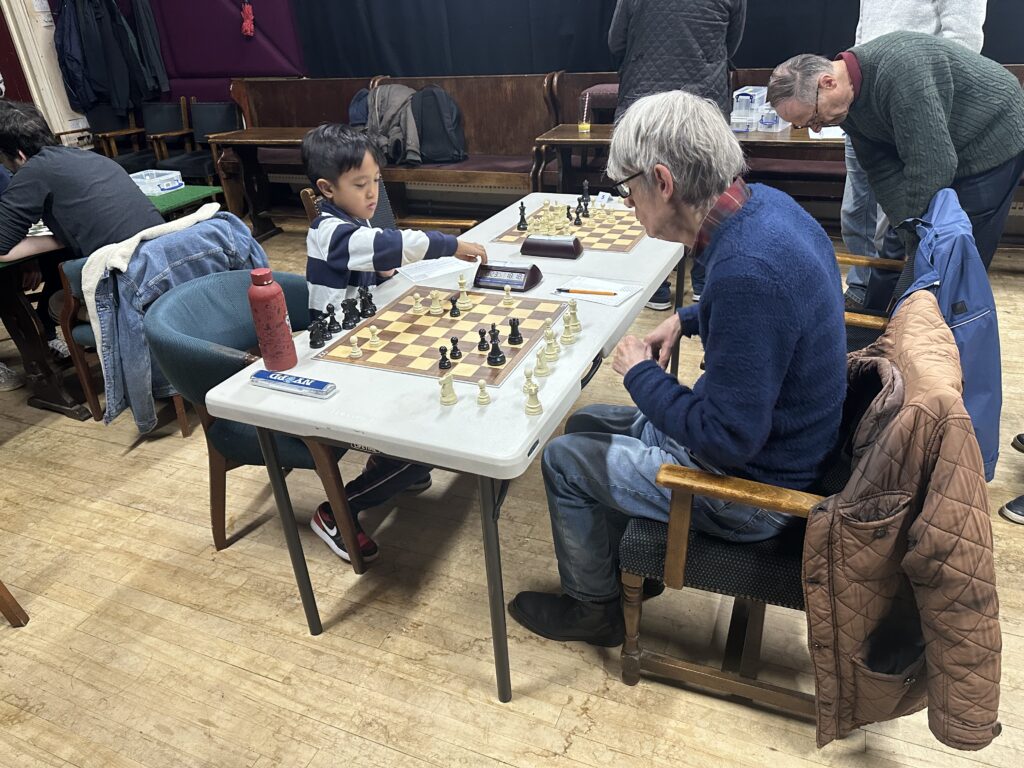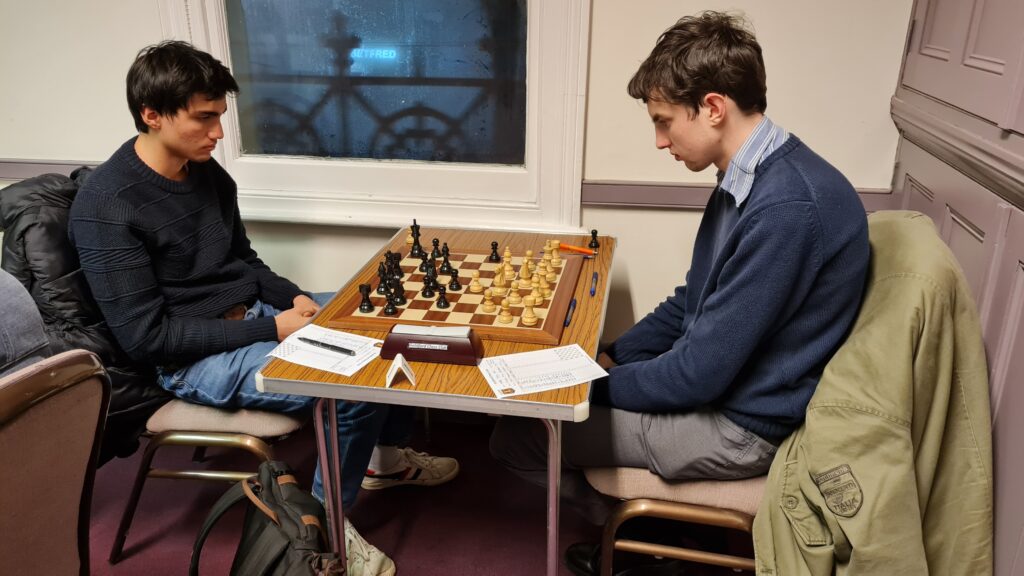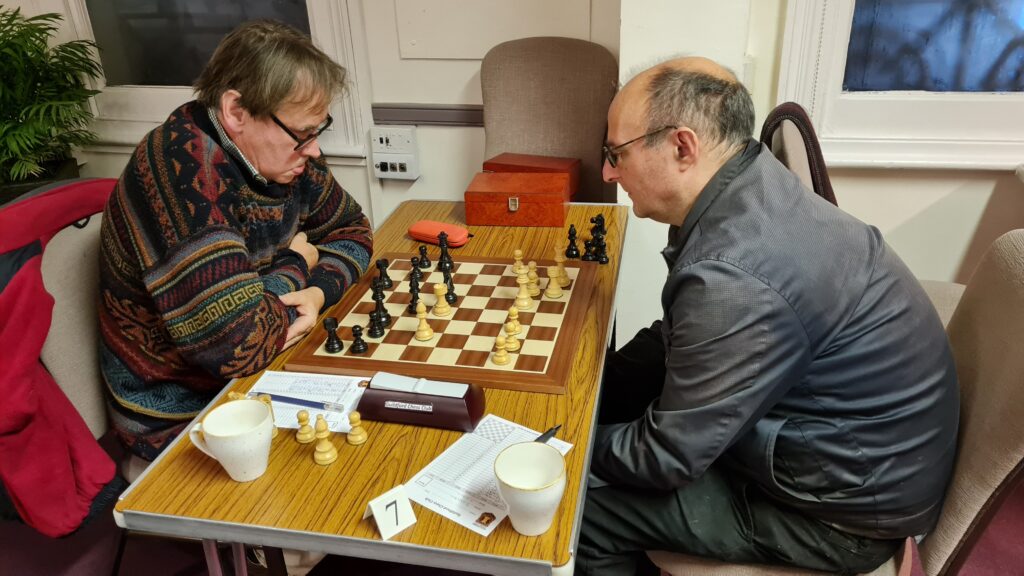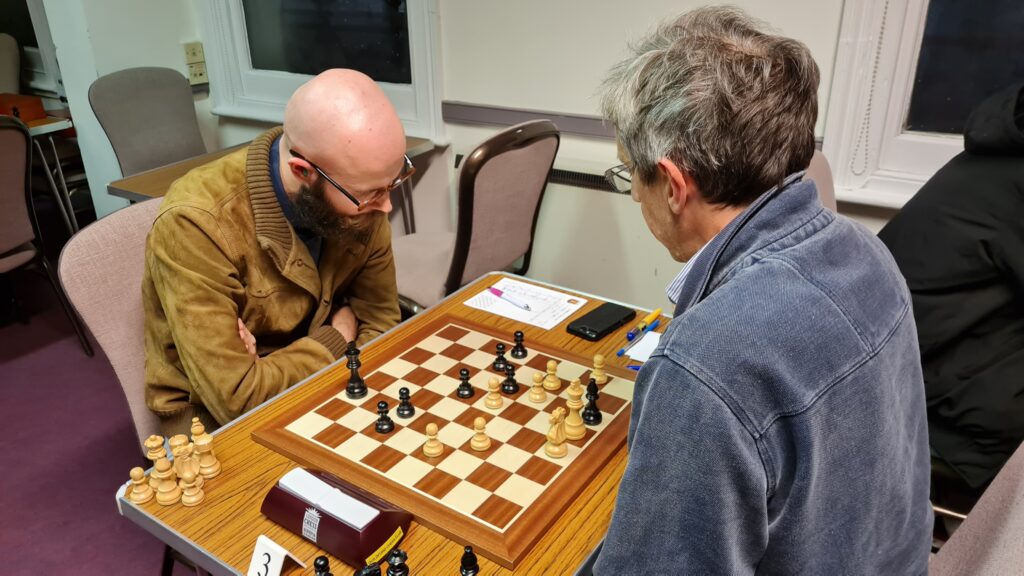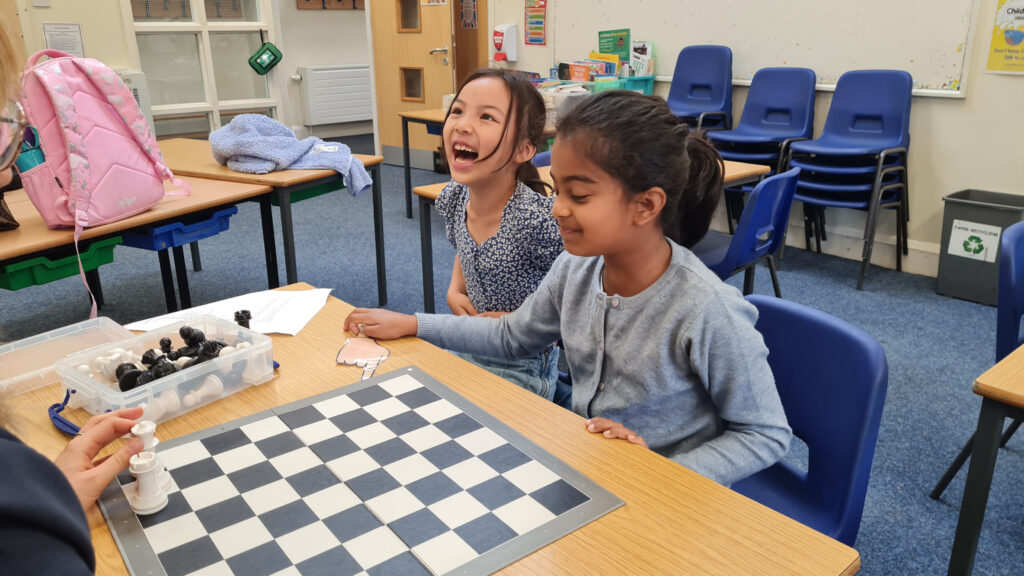Thames Valley League division 1 match played at St Luke’s Community Hall, Maidenhead on 13 November 2023
I wasn’t at this match, being otherwise engaged in a second-team encounter, so the news when it came through on the club WhatsApp group that we had only managed a draw came as something of a surprise. We had sent a strong team to Maidenhead, who have themselves struggled in the opening rounds of Thames Valley division 1. But when we saw the team they had assembled, all became clear, especially with the very strong IM (surely soon to be GM) they fielded on board 1. Matthew Wadsworth’s surprise inclusion showed they were taking this match very seriously.
Kingston captain David Rowson takes up the story. “There were several surprises and edge-of-the-seat moments last night,” he emailed me the next day. “First, of course, their team line-up. Charles Bullock, on board 1 in one of their previous matches, was on 5, and their board 1 was a bit of a shock.” That said, Wadsworth’s inclusion and the strength of both teams made for a fantastic match, with a 3-3 draw in the end a fair result.
On board 1 David Maycock, with White, was level against IM Wadsworth’s Caro-Kann, and they had reached this position by move 15:
Here David played the somewhat speculative 16. Qc7, perhaps hoping to induce a pawn move that might result in a weakness. But instead Wadsworth played the simple 16…Qb5, winning a pawn: 17. b3 Rac8 18. Qg3 Bxb3 19. axb3 Rxe2. 17. b4 would have been a slightly better option for White, but Black would still have retained an edge.
As it was, the variation David opted for led to the loss of a second pawn, and Wadsworth boiled down the position to a rook-and-pawn endgame in which he was two pawns up:
Because Black had two sets of doubled pawns David played on for another 20 moves, but IMs have that title for a reason, and Wadsworth calmly consolidated his advantage and created a passed c-pawn.
On board 2, Kingston FM Vladimir Li, playing Black, had a complex game against Andrew Smith. Vladimir was the exchange down, but he felt the position of his knight in the position below gave him some compensation, and the engine agrees, though clearly White retains an edge.
The game proceeded: 25. Rd6 Nxa2 26. Nxa6 Rxc2 27. Rd8+ Bf8 28. Rb8 Rc6 29. Ra3 Nc1. White is winning here, but both players were short of time and he chose what might be thought the obvious – but incorrect – move:
White played 30. Rxb5 – grab that pawn?! But much better is 30. Kf1, to cut off the knight’s escape route. The knight’s inability to move would have been likely to be decisive, but White’s error gave Black a chance: 30. Rxb5 Ne2+ 31. Kf2 Nxf4 32. Rb8 Kg7 33. Ra4.
This is another mistake – this is a time scramble remember – and if Black plays 33…Rc2+ here, picking up the g-pawn as well, he will have the edge. But Vladimir was perhaps concerned about White’s b-pawn and shored up his defences with 33…Bd6 instead. The position is now dead level. A few more moves were played, but a repetition of rook checks by Black in the position below produced a drawn game.
Peter Lalić, with White on board 3, enjoyed a surprisingly painless win against the talented junior Soham Kumar. Peter, who loves peculiar openings, so surprised his opponent by withdrawing his b1 knight back to its home square from c3 on move 5 that Kumar gave up his pawn on e5 for nothing. Peter never looked back, and by move 26, in the position below, he is completely winning thanks to the advanced e-pawn:
A few more moves were played, but Black’s position in the face of what became a pair of connected pawns is hopeless, and the youngster resigned. So 1.5 apiece on the top three boards.
On board 4, Kingston captain David Rowson had Black against the experienced John Wager. “It was a story of what-might-have-been,” said David afterwards. “The opening four moves were interesting – a slight variation from my usual Old Indian, known as the Wade System: 1. c4 e5 2. Nf3 d6 3. d4 Bg4 4. e3 Nd7.” Bg4 is the key move of the variation; it’s then a question of whether it’s good or bad for White to chase the bishop away, as he did. It should have been not so good for him in this case.”
In the position below David has a healthy edge, but he should have played 20…gxh4 immediately rather than throw in an attack on the white queen with Bf8. The position was level after that and, with time running short, a draw was agreed.
On board 5, Peter Andrews, with White against Charles Bullock, triumphed in a manic time scramble which could have gone either way. This was the position after some early tactical complications:
“At which point,” Peter explained later, “you could say that it slowly dawned on me that my position was more problematic than I’d realised, with g4 and d3 both weak. But I also had attacking chances down the h-file and (as became apparent later) down the f-file. After Qa6 I had to worry about Nd4 followed by Ba4 which could trap my queen unless I got some stuff off the back rank, and Ba4 was also going to be a problem if I played Rb3 (with his knight on e5). Trying to protect the weaknesses while making a kingside counter-attack happen was too complex for me, so I burned all my time, but also for him, hence several mistakes on his part towards the end.”
Scroll forward and we arrive at this position after White’s 29th move:
Black is actually much better here, but again time is short and he will of course be fearful of being mated on the h-file. In the complications which ensued. Peter won a piece and, by threatening a back-rank mate, also secured Black’s dangerous passed pawn. A vital win for Kingston.
Peter reminded me of a nice coincidence later: “You might also remember writing in your report of the second-team match at Maidenhead in May, in which I mated the same opponent in mid-board with a minute left on my clock, ‘How can two such mild-mannered characters engage in such brutality over the board?’ Well, I think this was even more bloodthirsty. I’m certainly very fortunate to be 3-0 against him after three of the worst time scrambles I’ve had in the past year.”
That made it 3-2 to Kingston, and the result hinged on the bottom board, where Kingston’s Gregor Smith was outrated by almost 300 points and playing Black. But this does not faze Gregor, who is nothing if not resilient, and he fought hard against another talented Maidenhead junior, Bohdan Terler. Playing a Sicilian and after an early exchange of queens, Gregor had a small plus by the middlegame, reaching this position after White’s 23rd move:
Gregor continued to play sensibly and entered a rook-and-pawn endgame a pawn up, though engines suggest that (as usual in rook-and-pawn endgames) it is a theoretical draw. But rook endgames are nightmarish, and heartbreak was lurking for Gregor: under time pressure, he went wrong in the position below:
Here he played 51… Rb6, forgetting that White’s 52. Rf1+ would both win a pawn and put Black’s king offside. White’s advantage thereafter was decisive, and the Maidenhead youngster, who hails from Ukraine, showed good technique to convert. And the move Gregor should have played to secure the draw? Can you see it? It’s 51…e3! Then if 52. Rf1+ the game proceeds: 52…Kg3 53. Kxe3 Rxd5 and, despite Black’s extra pawn, the game will be a draw because the black king is too far from the pawn to give it support.
Gregor’s defeat made the match 3-3, but Kingston had the consolation that the draw left us on top of the table (see below, under the scoreboard for the match) with 3/4 in a very competitive Thames Valley division 1. The season is, however, young and there is all to play for among seven very well-matched teams, all of whom can be strong if they get their best players out. Defending our Thames Valley title this year will not be easy, as the opening batch of matches and the fact that our rivals are upping the ante has proved.
Stephen Moss


